Vespers
Contraponto – Ensemble for Early Music
A thrilling live recording!
A masterpiece of early Baroque resounding through the vast cathedral space with seven seconds of reverberation
A masterpiece of early Baroque resounding through the vast cathedral space with seven seconds of reverberation
Marking the 10th anniversary of the founding of Japan’s leading early music ensemble Contraponto and their 20th regular performance, this recording was made live in June at St. Mary’s Cathedral, Sekiguchi Catholic Church in Bunkyo Ward, Tokyo. Given the challenging nature of the work, live recordings of Claudio Monteverdi’s Vespro della Beata Vergine (Vespers) such as this are rare even overseas. Faithfully performed in the style of Monteverdi’s era, this recording completely captures a more than two-hour-long performance including organ preludes and postludes, and antiphons and prayers based on Gregorian chant.
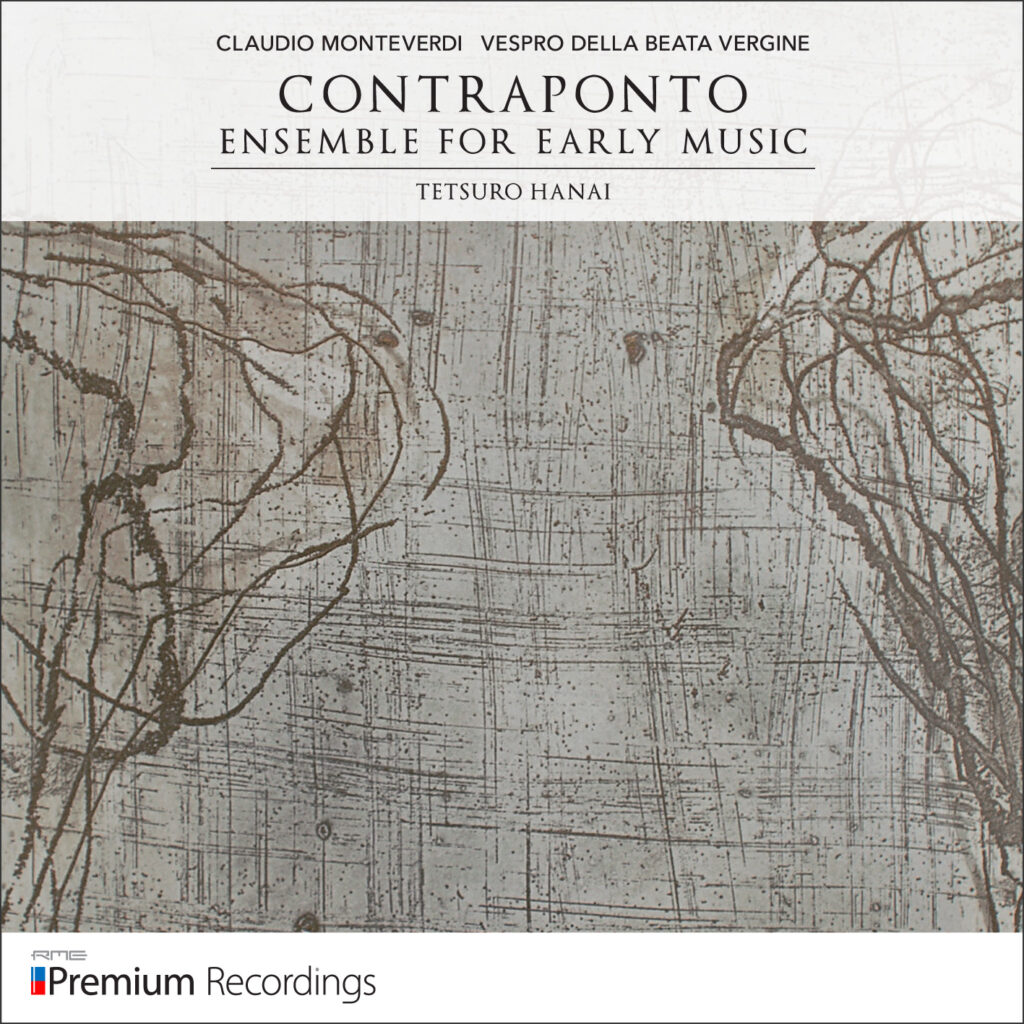
Vespers by Contraponto
Contraponto – Ensemble for Early Music
Album Overview
Performed by: Contraponto – Ensemble for Early Music
Conductor: Tetsuro Hanai
Program: Claudio Monteverdi – Vespro della Beata Vergine (Vespers)
Recording: June 22, 2015, at St. Mary’s Cathedral, Sekiguchi Catholic Church
Track List
Claudio Monteverdi (1567-1643) VESPRO DELLA BEATA VERGINE (1610)
| 1 | Intonazione del primo tono (Andrea Gabrieli) | (Andrea Gabrieli) |
| 2 | Deus in adjutorium meum intende / Domine ad adiuvandum me festina – Antiphon: “Laeva eius sub capite meo” – Psalm 109 (110) Dixit Dominus Domino meo | (Gregorian chant / Claudio Monteverdi) |
| 3 | Nigra sum | (Claudio Monteverdi) |
| 4 | Antiphon: Iam hiems transit – Psalm 112 (113): Laudate pueri Dominum | (Gregorian chant / Claudio Monteverdi) |
| 5 | Pulchra Es | (Claudio Monteverdi) |
| 6 | Antiphon: In lectulo meo – Psalm 121 (122): Laetatus sum in his quae dicta sunt mihi | (Gregorian chant / Claudio Monteverdi) |
| 7 | Duo Seraphim | (Claudio Monteverdi) |
| 8 | Antiphon: Ex quo descendit Maria – Psalm 126 (127): Nisi Dominus aedificaverit domum | (Gregorian chant / Claudio Monteverdi) |
| 9 | Audi Coelum | (Claudio Monteverdi) |
| 10 | Antiphon: Dum esset rex in accubitu suo – Psalm 147 (147b): Lauda Jerusalem Dominum | (Gregorian chant / Claudio Monteverdi) |
| 11 | Sonata Sopra “Sancta Maria” | (Claudio Monteverdi) |
| 12 | Lectio brevis – Responsorium breve – Hymnus: Ave maris stella | (Gregorian chant / Claudio Monteverdi) |
| 13 | Antiphona: Magnificat “Sancta Maria, succurre miseris” – Magnificat | (Gregorian chant / Claudio Monteverdi) |
| 14 | Capriccio sopra re fa mi sol la | (Giovanni de Macque) |
| 15 | Orationes (Kyrie, Pater noster, orationes propriae, conclusio) | (Gregorian chant) |
Interview:
Shigeru Saito and Tetsuro Hanai
Promotional Video:
Audi Coelum
Promotional Video:
Duo Seraphim
Behind the Scenes
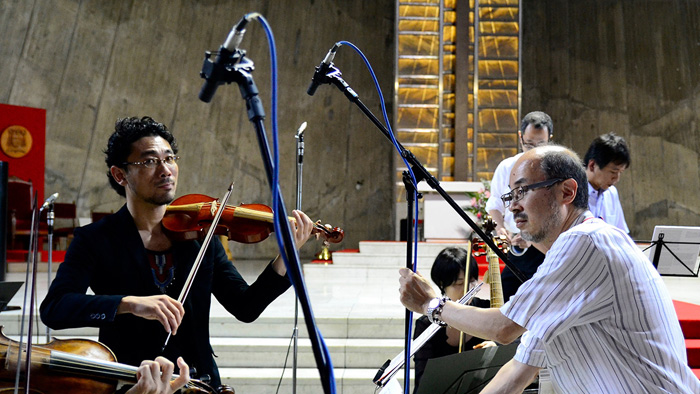
RME Users (Case Study)
A masterpiece of early Baroque resounding through the vast cathedral space with seven seconds of reverberation
Claudio Monteverdi: Vespro della Beata Vergine (Vespers)
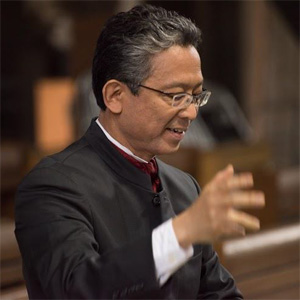
Tetsuro Hanai
(conductor)
Early music performer. After graduating from Waseda University’s Faculty of Humanities and Social Sciences, having majored in Philosophy, he studied organ and harpsichord at the Sweelinck Academy in Amsterdam. He earned diplomas in choral and orchestral conducting at the Rotterdam Conservatorium (Codarts), and studied early music vocal ensembles under Rebecca Stewart at the Brabant Conservatorium. While in Europe, he worked as a church musician, choir conductor, and keyboard player, as well as engaging in researching and performing Gregorian chant. In 1997, he founded Vocal Ensemble Capella in Tokyo, which continues to perform Renaissance and Flemish sacred music pieces. In 2005, he founded the early music ensemble Contraponto, serving as its leader. The ensemble focuses on performing Baroque sacred music, primarily from the 17th century. He also teaches orchestras, choirs, and vocal ensembles specializing in early music, promoting performances grounded in a thorough understanding of early music. He is the director of the Fons Floris Early Music Academy and a lecturer at the Kunitachi College of Music.
Official website:http://www.fonsfloris.com/tetsi/

Early Music Ensemble Contraponto
Founded in 2005 under the leadership of Tetsuro Hanai, this ensemble of early music vocalists and musicians specializing in period instruments has a repertoire centered on sacred music from the late Renaissance through Baroque, with a focus on the 17th century. In 2010, it established an associated choir. The ensemble arranges each piece they perform in accordance with the program, be it individual instrument and vocal ensembles, a cappella choral performances, soloists, choruses, or Baroque orchestras. To maximize the potential of each work, the ensemble aims for a performance style that is committed to the specific era and region of that work. Vocalists and instrumentalists share a common vision not only of music, but of sound itself, with the ensemble aiming for performances that are counterpoint-driven while harnessing each musician’s individual creativity. Their repertoire to date is diverse, including Renaissance music by Palestrina, Victoria, and Gesualdo; the Golden Age of Venetian sacred music by Gabrieli and Monteverdi; the three “great S’s” of German Baroque—Schein, Scheidt, and Schütz; Spanish villancicos and religious works from 18th-century Jesuit missions in Latin America; and French Baroque composers Charpentier, Lully, Du Mont, Campra, Jean Gilles, Couperin, de Lalande, and Mondonville. Celebrating its 10th anniversary in 2015, the ensemble performed Monteverdi’s Vespro della Beata Vergine (Vespers) at a commemorative concert in June, which was highly acclaimed.
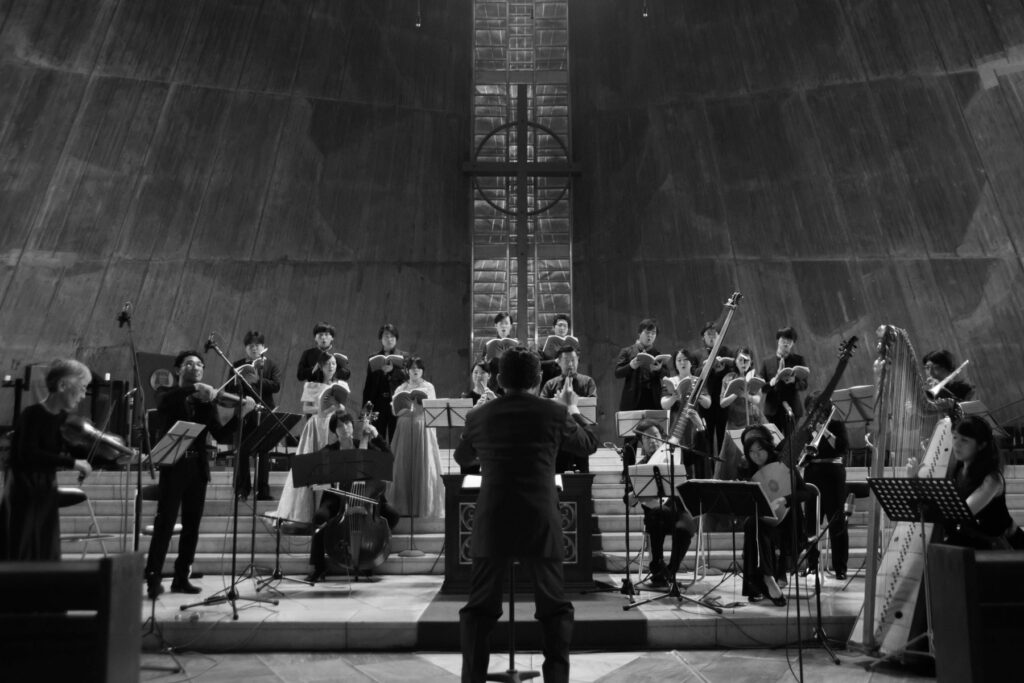
Soprano: Naomi Hanai, Aya Kaburaki, Naoko Kamiyama, Sachiyo Tamura
Alto / Tenor: Makoto Sakurada, Taku Sato, Kenichiro Watanabe, Seiji Kanazawa, Shinya Numata, Yasunari Tomimoto
Bass: Yasuto Kasuga, Genki Sakurai, Eitaro Matsui
Violin: Mari Ono, Hiroki Tanzawa
Violone: Nakako Nishizawa
Cornett: Kuniko Ueno, Masahito Kasahara, Daisuke Hosono
Trombone: Nobuko Miyashita, Kuniharu Ouchi, Hiroki Sanda
Flute / recorder: Liliko Maeda, Kiichi Suganuma, Yasuto Kasuga
Lute: Hiroshi Kaneko, Asako
Triple harp: Mie Ito
Organ: Naoki Ueo
Official website: http://www.fonsfloris.com/c/
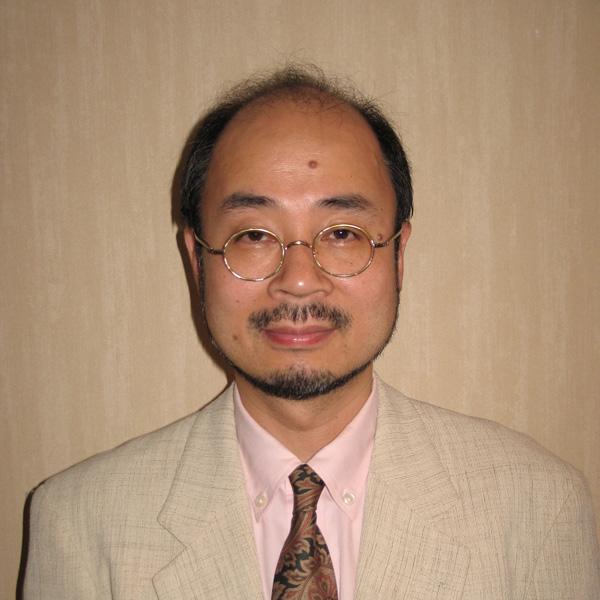
Hideo Irimajiri
(engineer)
Born in 1956. Graduated from the Kyushu Institute of Design in 1979 with a degree in acoustic design, and again in 1981 with a master’s degree in acoustic design from the same institute. He was awarded a Ph.D. in Art and Engineering in 2013 for his research on reverberation. He began recording as a student, exploring 4-channel recording and spatial acoustics in particular, which form the foundation of modern surround recording. In 1981, he joined Mainichi Broadcasting System, Inc. He worked in the video technology, audio technology, hall technology, and postproduction departments before becoming a technical manager. He researched loudness issues in broadcasting and has also worked towards standardization as a member of ARIB and The Japan Commercial Broadcasters Association. In the audio department, he was involved in projects such as the broadcasting industry’s first Dolby Surround live broadcast of high school baseball. He also pursues personal recording projects under the name Jiro Iruma, producing CDs for the Osaka Shion Wind Orchestra, and is involved in creative activities, composing music such as the opening theme for the JNN National High School Rugby Tournament and the music for the PC game Record of Lodoss War.

